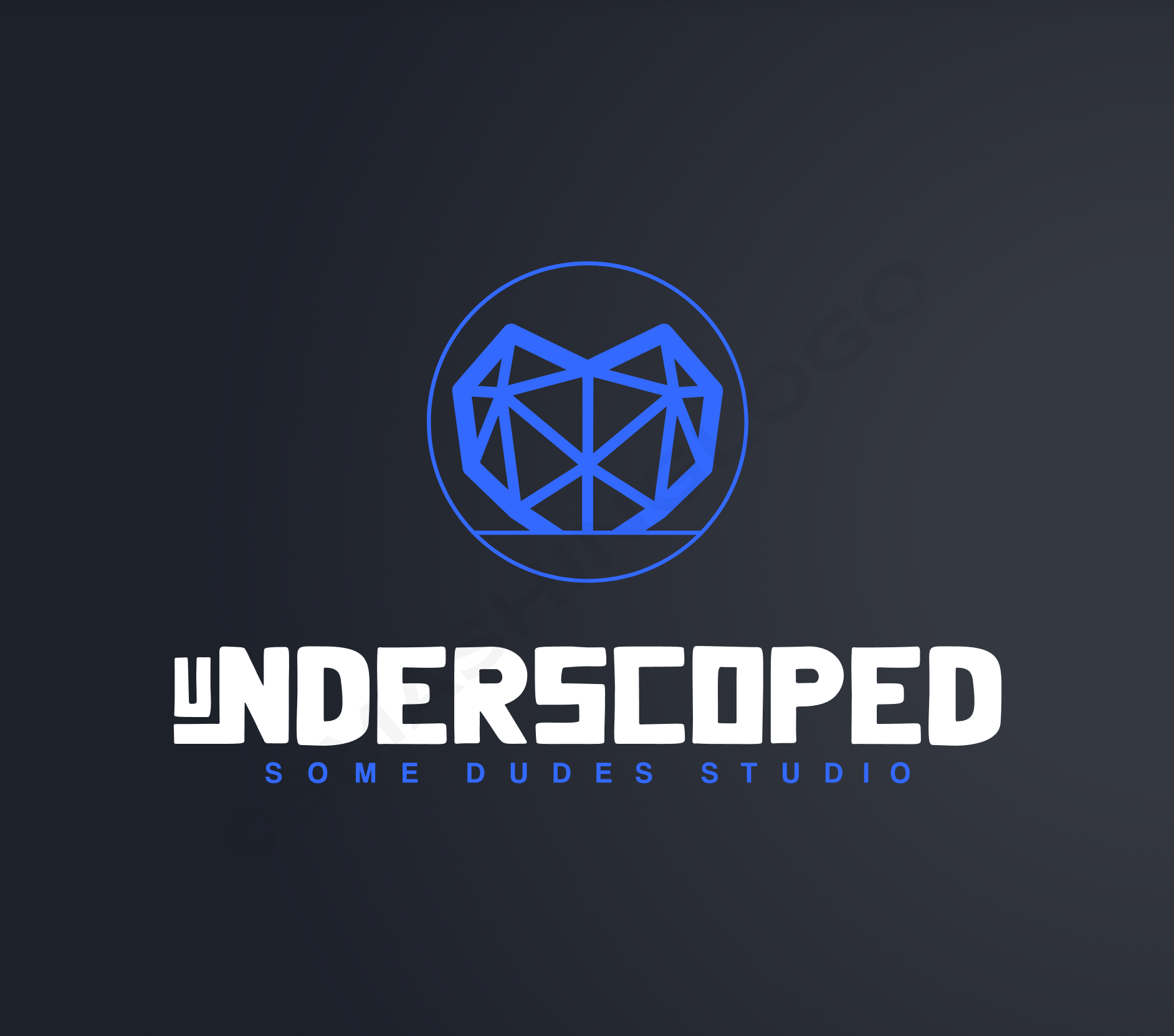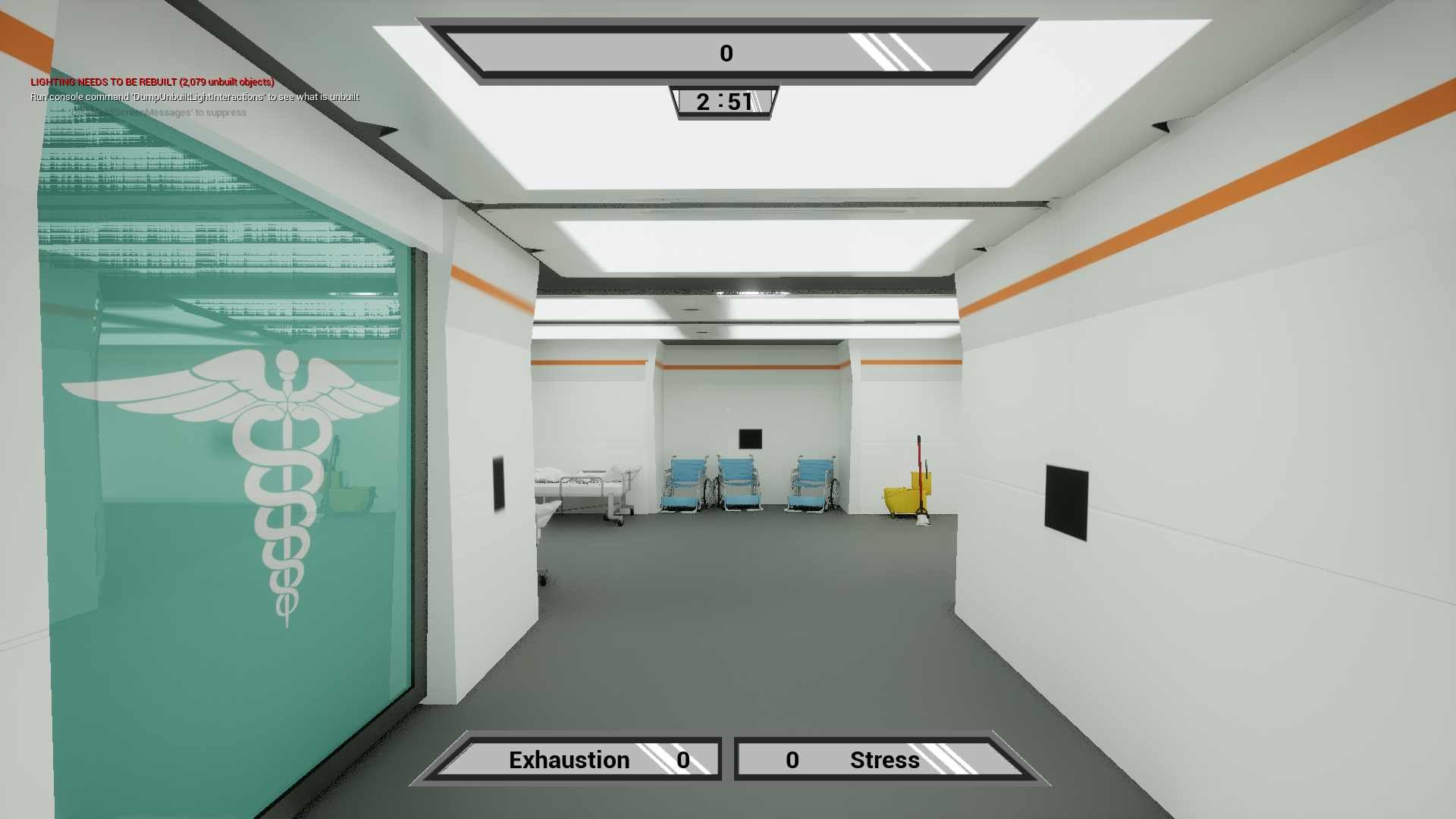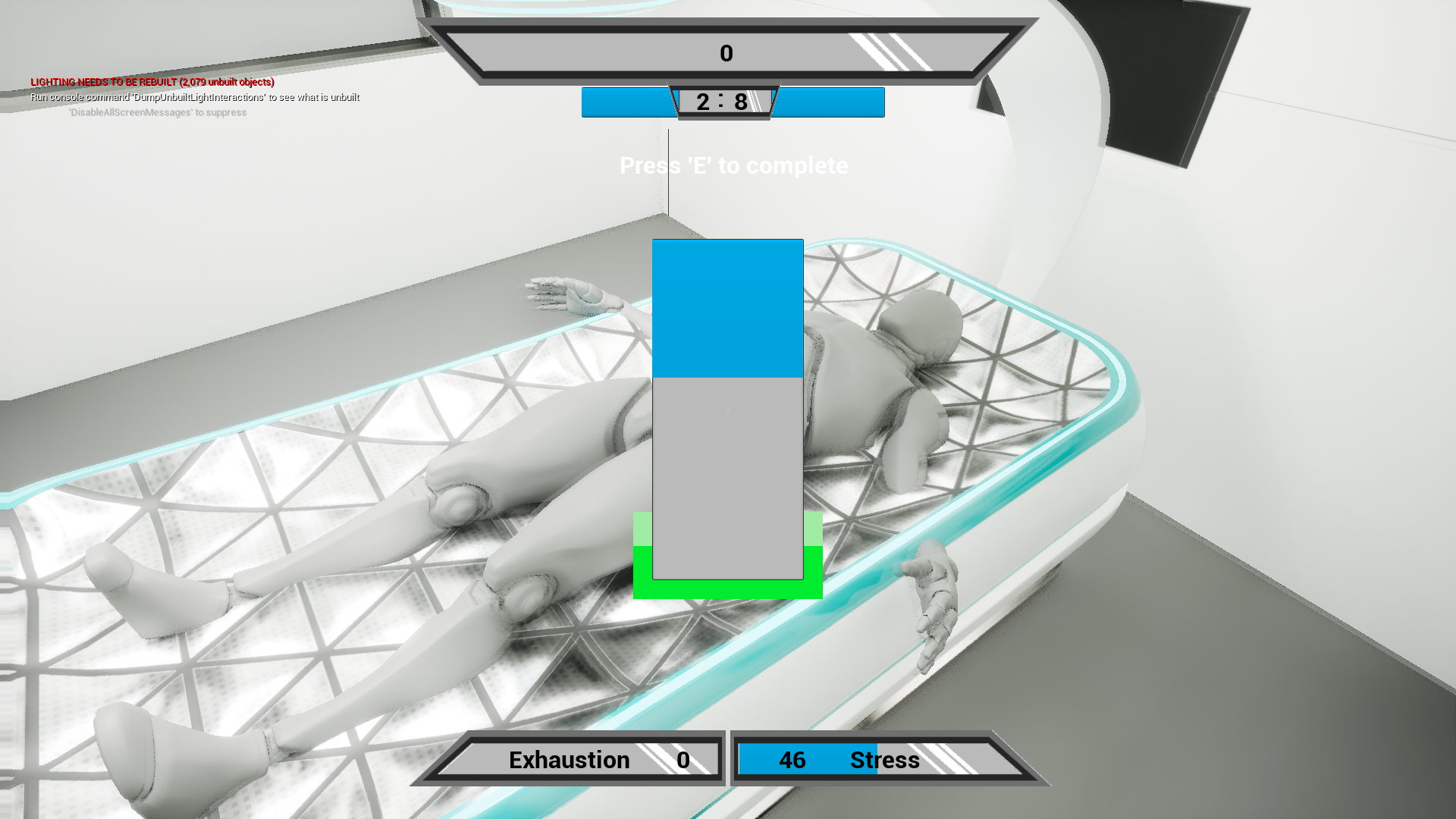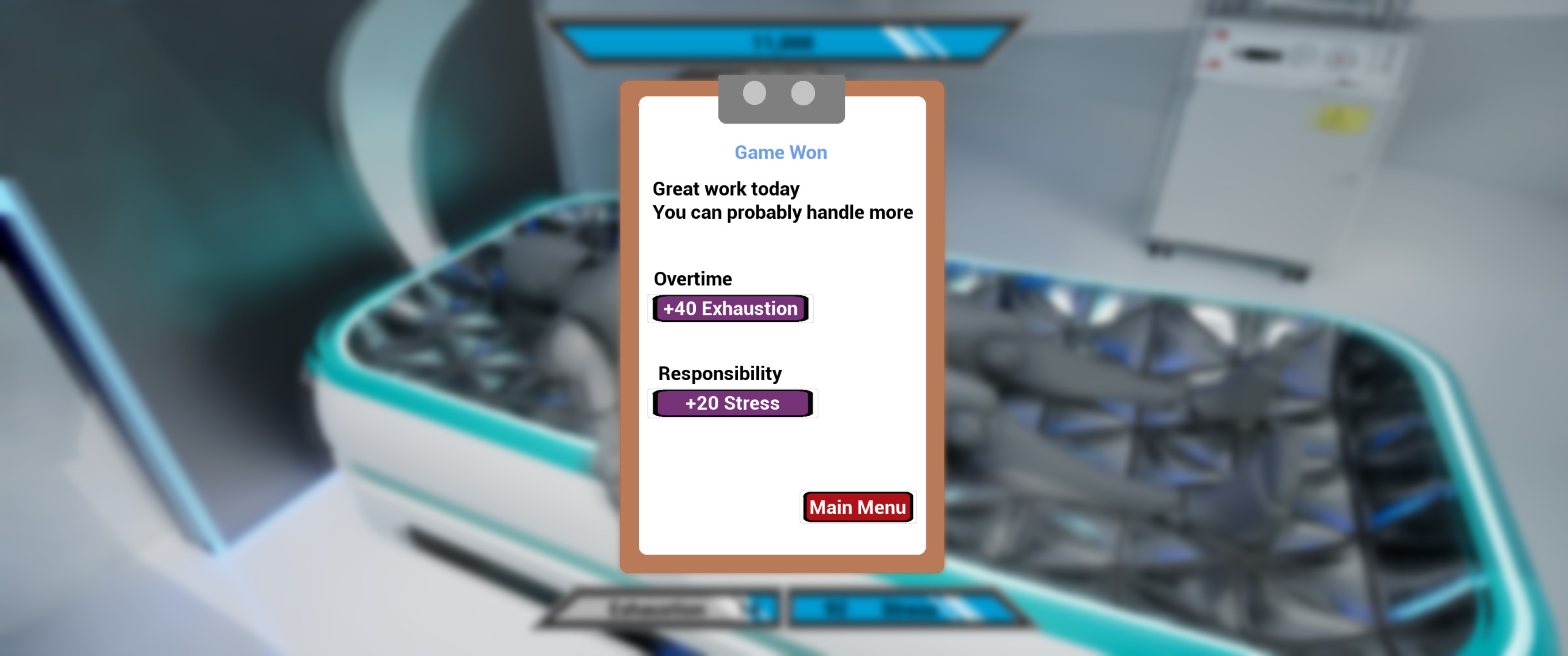Underscoped

“Underscoped” is an emotionally immersive and thought-provoking video game that puts players in the shoes of an overworked nurse in the demanding world of modern healthcare. Designed to shed light on the struggles of nurses and the challenges of understaffing, the game highlights the critical role these professionals play while providing an engaging and meaningful gaming experience.
Overview
Set in a sci-fi hospital, “Underscoped” tasks players with managing a constant influx of patient needs through timed mini-games. The gameplay emphasizes the chaos and exhaustion of an understaffed healthcare system, encouraging players to reflect on the real-world challenges faced by nurses.

Inside the hospital
My Role
As a programmer and version control lead, my primary responsibilities included:
- Programming: Developed core gameplay features using Unreal Engine Blueprints, with a focus on the random event system and player notifications.
- Version Control: Managed Git workflows, resolved merge conflicts and other issues.
- Collaboration: Supported teammates by troubleshooting code and ensuring smooth integration of various project components.
Technical Details
Engine and Language
- Engine: Unreal Engine 5
- Scripting: Blueprints
Features
- Timed mini-games for patient care
- Stress and exhaustion system
- Random event mechanics
Tools and Software
- Version Control: Git and GitHub
- Project Management: Notion and Discord
- Documentation: Google Drive and Miro
- Assets: Unreal Marketplace (for art and physics components)

Inside the hospital
Development Process
We adopted an Agile methodology, blending Scrum and Kanban practices. Regular reviews and planning sessions allowed us to adjust the game’s scope and maintain steady progress. Setting an early target for project completion to minimized stress during the final development phase.
Highlights
- Blueprint Scripting: Implemented the random event and notification system, the core gameplay system.
- Team Dynamics: Collaborated effectively with a motivated and cohesive team, fostering a positive and productive environment.
- Efficient Asset Utilization: Leveraged marketplace assets to accelerate development and focus on gameplay mechanics.
Challenges and Solutions
- Git and Unreal Integration: Encountered issues with Git, such as false-positive file changes. Resolved these by employing advanced Git commands and educating the team on best practices.
- Blueprint Limitations: Encountered challenges in Unreal Engine related to macros, wildcards, and arrays. Additionally, limitations in Blueprints, such as the absence of generics and variables in interfaces, posed implementation difficulties.
- Task Complexity: Underestimated the complexity of the task system, resulting in delays. Improved documentation and task breakdowns would have mitigated this issue.
- Build Problems: Some bugs arose after my departure due to Unreal being more tolerant when running in editor versus build. I remained accessible to assist remotely when needed.

Inside the hospital
Lessons Learned
- Improved Communication: Clearer task updates and documentation are essential to avoid misunderstandings.
- Responsibility Management: Overlapping roles can lead to inefficiencies; defining boundaries more explicitly can streamline workflows.
- Deeper Git Knowledge: A stronger grasp of Git-LFS and Unreal-specific workflows is crucial for future projects.
- Focus on Design: While skilled in coding, I recognize the importance of contributing more to design documentation and overall project planning.
Results and Reflection
Despite the challenges, “Underscoped” successfully delivered a compelling experience within our limited time and resources. The game’s core mechanics effectively conveyed the intended message, though further polish and balancing could enhance the final product.
Conclusion
“Underscoped” was a rewarding project that deepened my understanding of collaborative game development, problem-solving, and Agile methodologies. Moving forward, I aim to refine my technical and project management skills while continuing to explore meaningful game design.